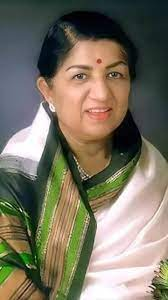In the blogchatter’s A2Z campaign, I will be presenting blogposts on ‘EXCEPTIONALLY TALENTED INDIAN ARTIST’ in the alphabetical order. Today, L – Lata Mangeshkar – playback. First few lines about the instrument - then about the artist.
" Music gives a soul to the universe, wings to the mind, flight to the imagination, and life to everything.” – Plato
Play back singing is a part of the film industry. Mostly play back singers record songs for sound track and it is used in the film. There are many popular play back singers in India belonging to different regions and languages. Play back singers were mostly trained in classical music and they expand their range to meet the demand. Playback singers receive a notable recognition among the public and many have fan clubs too.
After Alam Ara (1931), the first Indian talkie film for many years singers made dual recordings for a film, one during the shoot, and later in the recording studio, until 1952 or 1953. But now they pre recorded once and used in films. Many songs remain for ever though the singer is no more. There are many Indian films which have become block bluster simply because of the music and the play back singers. Indian film industry has brought in many prolific singers and they have made a mark.
Lata Mangeshkar is a player back singer who has sung many melodious songs and she is called as "queen of melody". In 1974, she was one of the first Indian playback singers to perform at ROYAL ALBERT HALL IN LONDON, UK .
Her first major break was with the song "Dil Mera Toda, Mujhe Kahin Ka Na Chho ra"—lyrics by Nazim Panipati —in the movie MAJBOOR (1948), which became her first big breakthrough film hit. From then onwards no turning back and she reached the pinnacle in the play back singing.
Lata Mangeshkar was honoured with highest civilian award in India and she was bestowed with numerous other honours and accolades from other countries of the world. Her song Aye Maalik Tere Bande Hum which was the original composition of Vasant Desai and used in the film DO AANKHEN BARAH HAATH on 1957, was adapted by a Pakistani school as the school anthem.
She did many concerts in India and abroad, including several charity concerts. She transformed the way Indian music concerts were perceived in the West. Lata Mangeshkar inspired many young talents and she left a incredible mark in the Indian music industry.
(I'm participating in #BlogchatterA2Z and hyperlink to https://www.theblogchatter.co)




No comments:
Post a Comment